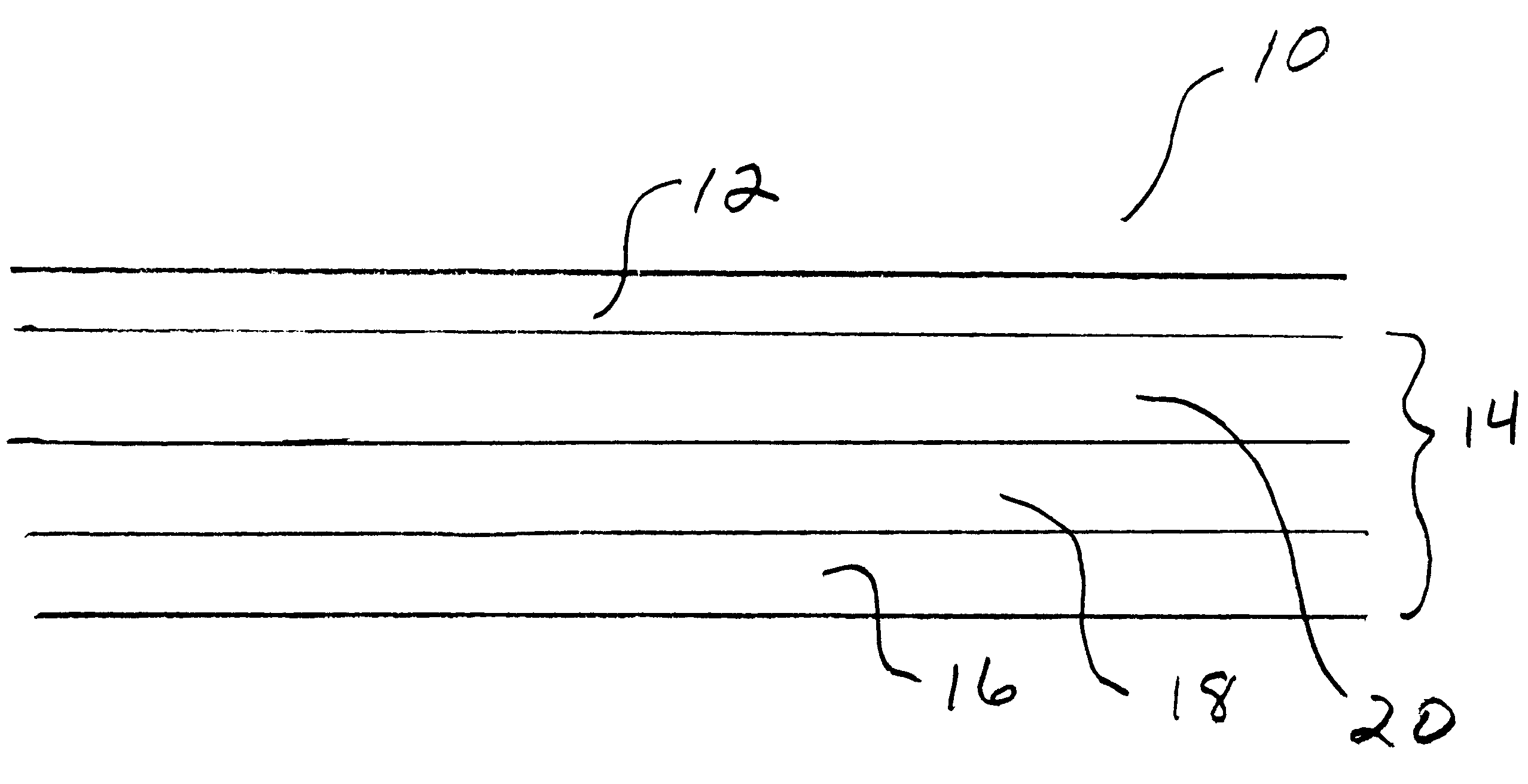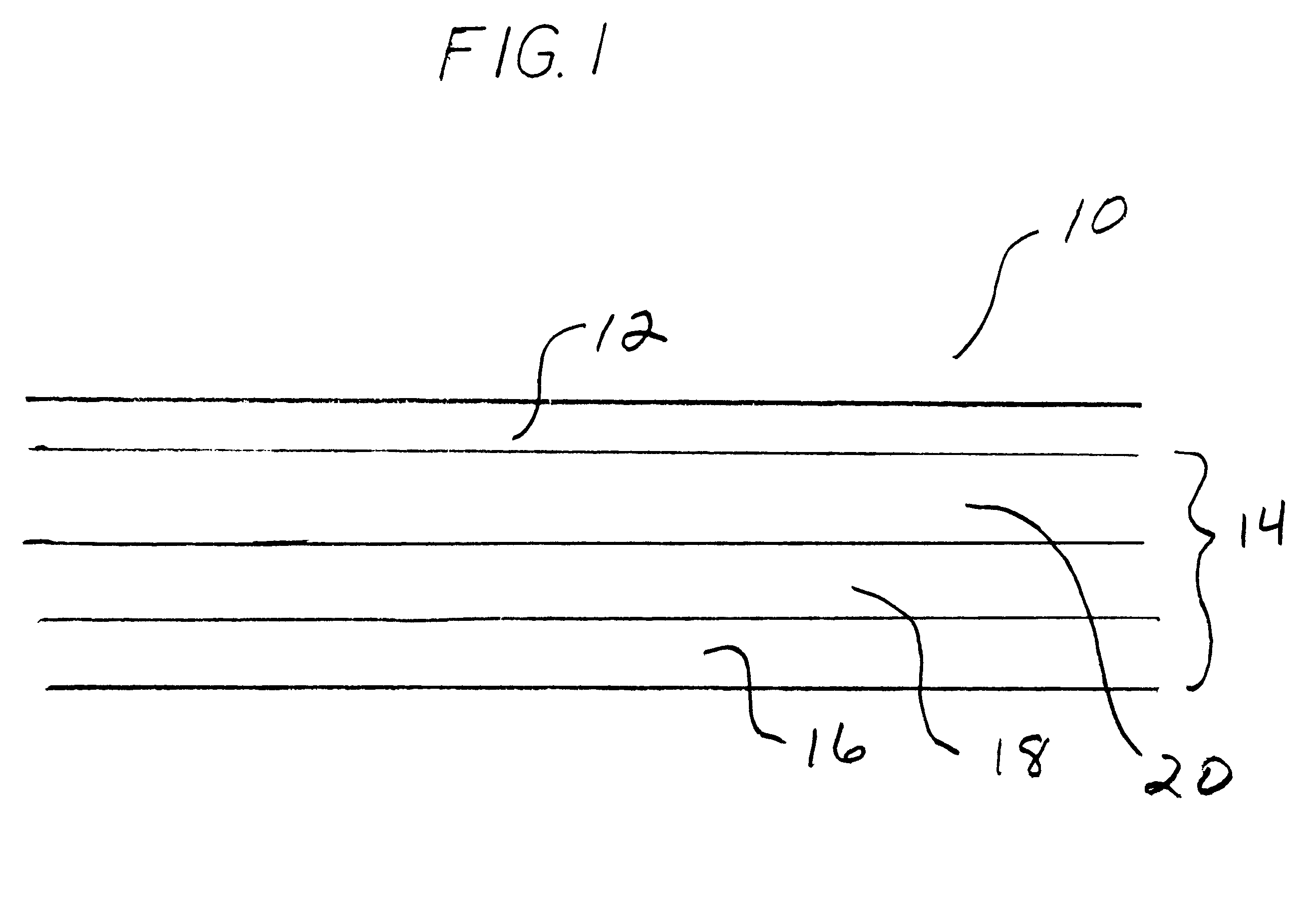Low resilience, high ink releasing printing surface
a printing surface and high ink technology, applied in the field of low resilience and high ink releasing printing surface, can solve the problems of limiting the amount of ink that may be transferred to the substrate, limiting the printing quality, and affecting the quality of the printed surface, so as to achieve high quality, high speed, and the effect of high percentage of ink applied
- Summary
- Abstract
- Description
- Claims
- Application Information
AI Technical Summary
Benefits of technology
Problems solved by technology
Method used
Image
Examples
Embodiment Construction
A Composition According to the Present Invention
A low-resilience printing surface according to the present invention can be made by compounding the following ingredients in a rubber mill:
A solvent such as toluene is added and the low-resilience printing surface layer can be prepared using a solvent cast technique to coat a transfer medium such as a mylar sheet and then permitting the material to dry. In the alternative, the surface layer can be solvent cast directly onto the blanket carcass that has been coated with an adhesive, dried and cured at about 300.degree. F. The thickness of this surface material can be from about 4 mils to about 15 mils thick, preferably about 8 mils to about 12 mils thick, and most preferably about 10 to about 12 mils. When using a transfer sheet, the sheet with the compound side down, is placed onto the carcass and adhesively attached thereto. An appropriate adhesive would be easily determined by one of ordinary skill in the art. In addition to the solv...
PUM
 Login to View More
Login to View More Abstract
Description
Claims
Application Information
 Login to View More
Login to View More - R&D
- Intellectual Property
- Life Sciences
- Materials
- Tech Scout
- Unparalleled Data Quality
- Higher Quality Content
- 60% Fewer Hallucinations
Browse by: Latest US Patents, China's latest patents, Technical Efficacy Thesaurus, Application Domain, Technology Topic, Popular Technical Reports.
© 2025 PatSnap. All rights reserved.Legal|Privacy policy|Modern Slavery Act Transparency Statement|Sitemap|About US| Contact US: help@patsnap.com



